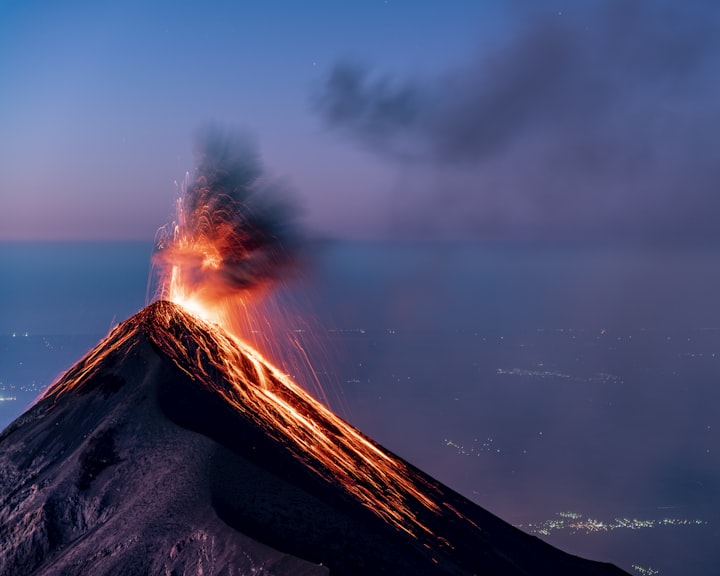Why Active Volcanoes Endanger People’s Lives
What do you know about volcanoes?

Volcanic activity may seem like a dramatic movie subject, but you should know that, in reality, volcanoes do not sleep on our planet. It is estimated that there are currently about 1,500 active volcanoes on Earth, of which 75% are located in the Pacific Ring of Fire.
Today we tell you about a threat that throbs in silence above us: which are the most dangerous active volcanoes, where are they located, and which are the countries with the highest risk of volcanic activity. Find out everything from us!
What are active volcanoes and how dangerous are they?
Active volcanoes are defined by scientists as volcanoes that have erupted at least once in the last 10,000 years. Therefore, we cannot look at the phenomenon as topical, at least not in our sense; In reality, it can take thousands of years for a volcano to be considered "asleep."
As for the danger posed by active volcanoes, we recognize that it is lower than a few thousand years ago, when people did not have access to information and when the authorities' ability to move large masses of people was relatively limited.
By comparison, in 79 BC, the world's most famous volcano, Mount Vesuvius, erupted and destroyed an entire city, just like the famous Pompeii. Even today, the images of men, women, and children trying in vain to escape the eruption give us chills.
In contrast, the latest volcanic activity, the eruption earlier this year of the Taal volcano in the Philippines, produced fewer casualties, although it destroyed homes, dismantled trees, and covered dozens of animals with ashes.
The conclusion? Active volcanoes are still dangerous, although today our defense against them is strengthened. This does not mean that if we were to be near an eruption, we could be considered protected.
Countries with the most active volcanoes
As I told you, most active volcanoes are grouped in the Pacific Ring of Fire, the largest and most active volcanic zone on Earth, which stretches around the west coast of the Americas, along with Asia, including eastern Japan. , including Indonesia, the Philippines, and Australasia. The area includes 452 active volcanoes.
As far as the country with the most volcanoes is concerned, the United States attributes its primacy, with 173 volcanoes, followed by Russia, with 166. Although the two states have not experienced dramatic eruptions lately, given their greater extent. chosen in the vicinity of the Pacific Ring of Fire, they witness a pronounced volcanic activity.
The top 3 are finished by Indonesia, with 139 volcanoes, of which only three are in Bali (Agung, Batur, and Buyan-Bratan). Japan ranks fifth and Chile sixth with 104 volcanoes.
Another hot spot for volcanic activity in the world is Africa, the area where the African tectonic plate meets the Arabian plate. That is why Ethiopia is in the top 10 countries with the most active volcanoes, numbering no less than 57, followed by Ethiopia (23) and Tanzania (10).
In terms of volcanic activity in Europe, we can say that we generally enjoy peace, at least compared to the turbulent Pacific Circle of Fire.
Only Iceland "managed" to rank among the top 10 countries with active volcanoes, in fourth place, despite being far from the Circle of Fire. Explication? The European country is located just above the Atlantic Ridge, the tectonic plate that separates the Eurasian Plate from the North American Plate.
Otherwise, Italy is witnessing a consistent volcanic activity, with the Etna, Amiata, or Vesuvius Mountains. Romania also has two volcanoes, Racoș and Verejeni.
Do you want to know more? The map below shows you the most active volcanoes in the world, divided into "restless", at risk of eruption or erupting/erupting shortly.
The most famous active volcanoes in the world
Below we tell you which are the most famous active volcanoes today!
Mauna Loa, Hawaii
The largest volcano in the world is located in Hawaii and has marked a constant activity, erupting for 700,000 years continuously. Most recently, the active volcano made its presence felt in 1984, and today it is considered quite dangerous due to the constant network of burning lava that surrounds it.
Eyjafjallajokull, Iceland
Iceland "compensates" for the apparent lack of volcanic activity in Europe by owning one of the most active and dangerous volcanoes.
It's about Eyjafjallajokull - we can't even say his name, let alone being near him. Unlike the other appearances on the list through the icy layers that crown it, Eyjafjallajokull last erupted in 2010, resulting in a real air traffic crisis.
Vesuvius, Italy
Although Vesuvius has been seemingly quiet since the Pompeii tragedy, this active volcano is considered one of the most dangerous in the world, mainly due to its proximity to a densely populated area. Given the fact that Naples is only 9 kilometers from Vesuvius, in the event of an eruption, which is predicted by scientists, the damage could be huge.
Nyiragongo, Congo
Responsible for about 40% of all eruptions in Africa, Nyiragongo has been in power 32 times since 1882. It is located in the Virunga National Park in Congo, and the most serious threat in its case is the lava lake it shelters and which can flow into remote regions.
Taal, Philippines
Given the fact that it just gave us shivers, erupting in January 2020, Taal could not be missing from the list. The volcano has so far ticked off 34 eruptions and the high associated risk is related to its proximity to Manila, less than 50 kilometers away.
The volcano has been showing signs of erupting since the late 1990s, and experts insist the risk has not diminished even after this year's events.
Active volcanoes are scattered all over the world, but their degree of danger is different. When they erupt, they can cause a lot of loss of life, so they are constantly monitored by scientists.





Comments
There are no comments for this story
Be the first to respond and start the conversation.